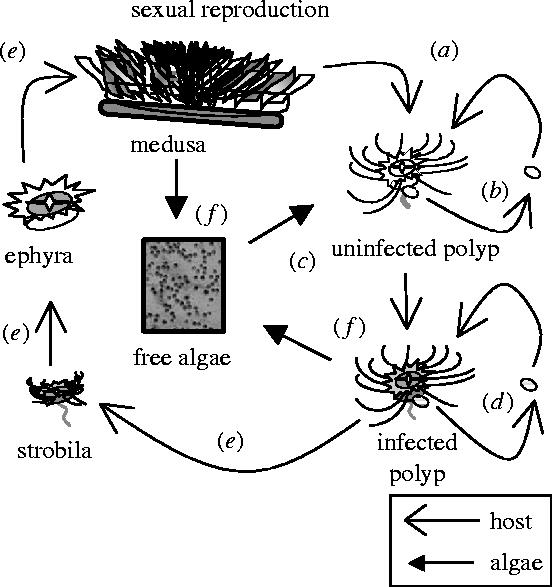Figure 1.

Cassiopea–Symbiodinium symbiosis life cycle. Algae are transmitted horizontally between adult host generations. Female medusae release planula larvae (a) that disperse and settle as uninfected polyps. Uninfected polyps bud to produce clonal offspring (b) ultimately becoming infected by environmental algal symbionts (c). Infected polyps bud, producing clonal offspring that inherit algae via vertical transmission (d). Once infected, polyps undergo metamorphosis (e). Both medusa and infected polyps release algae into the environment (f) and may be the source of new infections (c).
